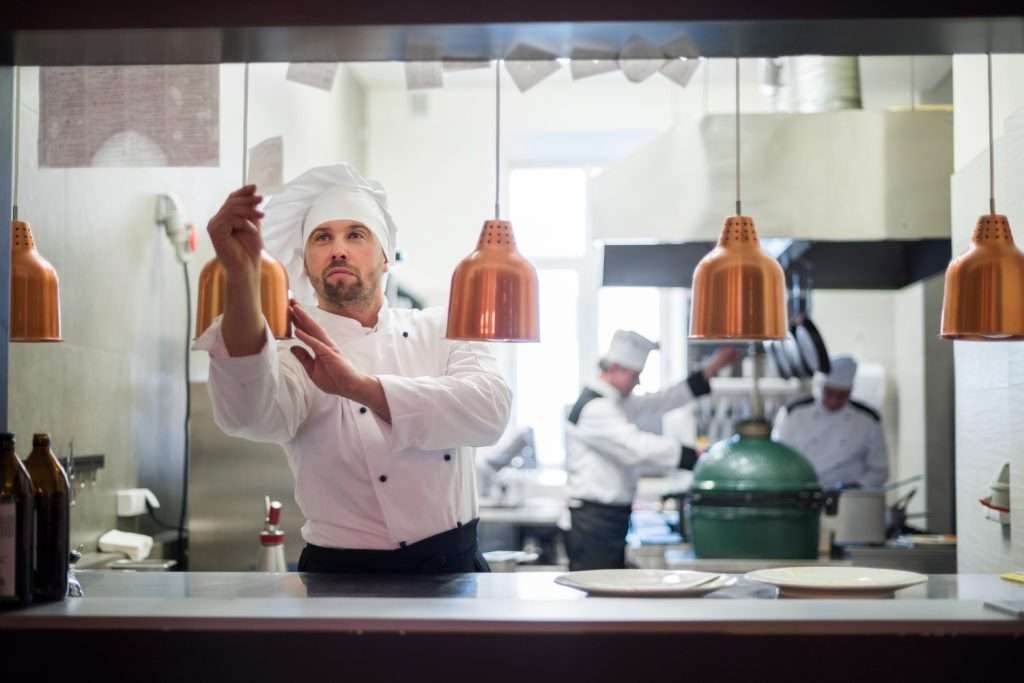The hospitality & culinary industries are as diverse as it is fascinating, embracing a wide range of professionals who bring their unique flavors to the table. Among these are temp chefs, private chefs, and home chefs – each playing distinct roles in the gastronomic universe. Let’s delve into these differences, dissecting their roles, skills, and environments to provide a clearer understanding of these culinary experts. Whether you’re an aspiring chef or a food enthusiast, understanding these variations will enrich your appreciation of the culinary arts.
Defining the Roles Temp Chefs, Private Chefs, and Home Chefs
Temp chefs, private chefs, and home chefs each cater to different needs and scenarios in the culinary world. Temp chefs, often hired through agencies or as freelancers, fill temporary positions in professional kitchens. They are the relief pitchers of the culinary world, stepping in during busy periods, staff shortages, or special events. Private chefs, on the other hand, work for specific clients – usually families, individuals, or organizations – preparing meals tailored to personal tastes and dietary requirements. Home chefs are passionate about cooking but typically don’t pursue it as a profession; they cook for pleasure, family, and friends, often experimenting and honing their skills in their own kitchens.

Culinary Skills – Comparing Three Types of Chefs
When it comes to culinary skills, each type of chef brings something unique to the kitchen. Temp chefs must be versatile and quick learners, able to adapt to different kitchen environments and styles at a moment’s notice. They often possess a broad range of skills to meet the diverse requirements of various kitchens they work in.
Private chefs, meanwhile, usually showcase a deep understanding of specific culinary preferences and dietary needs. They often specialize in certain cuisines or dietary plans and excel in creating personalized menus. Their skill set is not just about cooking; it’s about personalizing the dining experience to a client’s preferences and needs.
Home chefs, though not formally trained, often display remarkable culinary talents. Many are self-taught, learning through experimentation, online resources, and cookbooks. Their skills may not cover the wide range found in professional chefs, but they often have a strong grasp of home-cooking techniques, comfort foods, and family-style meals.
Workplace Environments – Where Do They Cook?
The environments in which these chefs work are as varied as their roles. Temp chefs are culinary nomads. Their workplace could be a high-end restaurant one day and a bustling catering event the next. This variety demands adaptability and the ability to quickly acclimate to new teams and kitchen setups.
Private chefs typically work in the homes of their clients. Their environment is more controlled and personalized. They have the luxury of knowing their clientele and can tailor their cooking environment to suit both their needs and those of their clients. This might include a well-equipped home kitchen or even traveling with the client to different locations.
Home chefs, as the name suggests, operate in their personal kitchens. These spaces might not have the advanced equipment of professional kitchens, but they are intimate and familiar. For the home chef, the kitchen is a personal sanctuary where creativity can thrive within the comfort of home.
Each type of chef, whether a temp, private, or home chef, contributes uniquely to the rich tapestry of the culinary world. Their differences in skills and environments are what make the gastronomic universe so diverse and exciting. From the adaptability of temp chefs and the personalized touch of private chefs to the heartfelt cooking of home chefs, each brings their flavor to the table, enriching our culinary experiences.
Clientele and Service: Who They Cook For
The clientele for each type of chef varies significantly, influencing their approach to cooking and service. Temp chefs cater to a wide array of clients, depending on the setting they find themselves in. One day they might be cooking for a large event with hundreds of guests, and the next, they could be in a small, exclusive restaurant. This variety requires them to be flexible and adaptable in their service approach.
Private chefs, in contrast, serve a more exclusive clientele. They cook for individuals, families, or small groups, often developing a deep understanding of their clients’ preferences and dietary restrictions. This close relationship allows private chefs to provide a highly personalized service, crafting meals that resonate on a more personal level with their clients.
Home chefs usually cook for themselves, their families, or friends. Their “clientele” is often the most personal and intimate, as they are usually cooking for loved ones. This setting allows for a more relaxed and informal service, where the emphasis is on sharing and enjoying food together, rather than on professional standards of service.

Menu Creation – Freedom and Constraints
When it comes to menu creation, each chef faces different levels of freedom and constraints. Temp chefs often have to adhere to the menu of the restaurant or event they are working at. Their creativity might be limited to executing pre-designed menus, although some settings might allow them to contribute their own ideas.
Private chefs enjoy a higher degree of freedom in menu creation. Since they cater to specific clients, they can tailor menus to suit individual tastes and dietary needs. This freedom allows private chefs to be more creative and experimental, often resulting in a highly customized dining experience.
Home chefs, meanwhile, enjoy the most freedom in menu creation. Unbound by the constraints of a professional setting, they can experiment with recipes, ingredients, and cuisines as they please. This freedom can be a significant source of joy and creativity, allowing home chefs to explore and develop their culinary skills at their own pace and taste.
Employment Stability – Freelance vs Permanent Positions
Employment stability varies greatly among these types of chefs. Temp chefs typically work in freelance or contract positions. This type of employment can offer variety and flexibility but often lacks the stability and benefits of permanent positions. Temp chefs must continuously seek new engagements, which can be both exciting and uncertain.
Private chefs, depending on their arrangement, can enjoy more stability. Some are employed on a permanent or long-term basis by a single client or family, providing a steady income and a consistent work environment. However, this depends heavily on the client’s needs and can vary widely.
Home chefs stand apart in this regard, as their cooking is not tied to employment. For them, cooking remains a personal endeavor or hobby, free from the pressures of job stability and market demands. This allows them to enjoy cooking without the stress of relying on it for income, offering a different kind of satisfaction and fulfillment.
Flexibility & Work Hours – A Comparative Look
Flexibility and work hours in the culinary profession vary widely between temp chefs, private chefs, and home chefs. Temp chefs often deal with unpredictable schedules, with hours that depend on the specific needs of each assignment. They might work long hours for a week at a busy restaurant and then have a few days off before the next gig. This irregularity offers flexibility but can also lead to instability.
Private chefs, in contrast, usually have more consistent work hours. Their schedules are often aligned with the needs and routines of their clients. This can lead to a more regular and predictable work-life balance. However, they might also need to be available for special events, travel with their clients, or adjust to their clients’ changing schedules, requiring a degree of flexibility.
Home chefs enjoy the most flexibility, as their cooking is based on personal schedules and preferences. They cook when they want to and for whom they want to. There’s no pressure of adhering to a professional timetable, making it a leisurely pursuit that fits into their lifestyle.
Cuisine Specialization – Diversity In Cooking Styles
Cuisine specialization and cooking styles also differ among these types of chefs. Temp chefs often need to be culinary chameleons, adapting to the styles and menus of various kitchens. This requires them to be knowledgeable in a wide range of cuisines and cooking techniques, offering them a chance to constantly learn and evolve.
Private chefs, however, often specialize in particular types of cuisine, tailored to their clients’ preferences. Whether it’s vegan, gluten-free, Mediterranean, or any other specific diet or cuisine, private chefs typically develop a niche, which allows them to become experts in that particular area.
Home chefs usually experiment with a wide range of cuisines based on personal interest and taste. Their specialization is often driven by the desire to explore new culinary horizons. They want to learn new techniques, and recreate dishes from their travels or from dining experiences.

Job Accessibility and Market Demand
The job market and accessibility for these chef roles vary significantly. Temp chef positions are generally more accessible, as there is a consistent demand for skilled professionals who can fill temporary roles in various settings. The flexibility and variety these positions offer make them an attractive option for many chefs looking to gain diverse experience.
Private chef roles, while offering stability, can be more challenging to secure. They often require not just culinary expertise, but also a good rapport with clients, discretion. They sometimes have a specialized skill set in a particular type of cuisine or dietary preference. The demand for private chefs tends to be more niche and can vary greatly depending on geographical location and the clientele’s lifestyle.
For home chefs, the concept of market demand is not directly applicable, as their cooking is more of a personal passion than a profession. However, the growing interest in home cooking, is fueled by social media and cooking shows. These have created a vibrant community of amateur chefs who share recipes, techniques, and experiences, broadening the culinary landscape.
Hospitality Industry Offers Mighty Opportunities
The culinary field offers a diverse range of opportunities and experiences, whether it’s the adaptable world of temp chefs, the personalized realm of private chefs, or the creative freedom enjoyed by home chefs. Each role plays a vital part in the rich tapestry of the culinary arts, catering to different needs and preferences, and driven by a shared passion for food and cooking. Temp chefs bring adaptability and a broad skill set to professional kitchens. Private chefs offer tailored culinary experiences to discerning clients, and home chefs add to the diversity with their explorative and personalized approach to cooking. Understanding these differences not only highlights the varied pathways within the culinary profession but also celebrates the universal love for creating and enjoying good food. Whether it’s in a bustling restaurant kitchen, a private home, or a cozy family setting, these chefs contribute significantly to the culinary world, each in their unique and flavourful way.
Become A Temp Chef
Want to be a Temp Chef, or even take a become a Franchisee in the Temp Chef industry. Buzz today woth Prep Right Hospitality in Queensland, seeking partners nationwide.
Temp chefs, private chefs, and home chefs each navigate unique landscapes in their culinary journeys. The differences in their clientele, menu creation freedom, and employment stability reflect the diverse nature of the cooking profession. Temp chefs thrive in ever-changing environments, adapting to various culinary demands. Private chefs enjoy the privilege of crafting bespoke experiences for a more exclusive clientele. While home chefs relish in the freedom and personal fulfillment of cooking for themselves and their loved ones. These distinctions not only highlight the versatility required in the culinary arts but also the passion that unites all who cook, whether professionally or for pleasure. As the culinary world continues to evolve, these roles will undoubtedly adapt, continuing to offer unique and flavorful experiences to all who appreciate the art of cooking.


